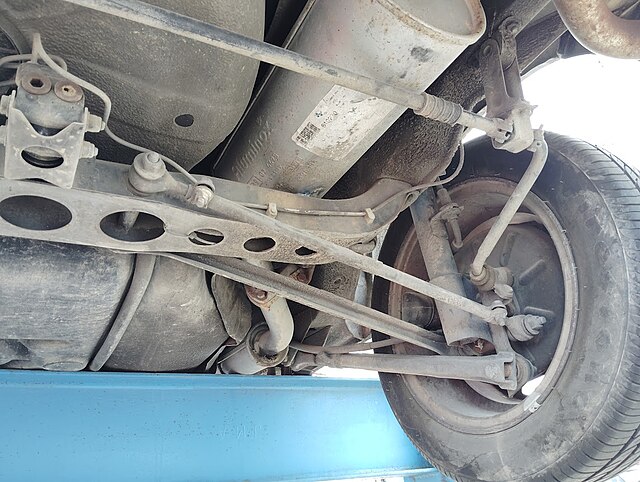The suspension system of a vehicle is often overlooked, but it plays a critical role in your car’s handling, comfort, and safety. It’s responsible for keeping the tyres in contact with the road while absorbing bumps and vibrations. Knowing how it works and how to spot problems can help you avoid costly car repairs and dangerous driving conditions.
What is the Suspension System?
The suspension system is a network of components that connect your car to its wheels. It includes:
- Springs: Support the vehicle’s weight and absorb road shocks.
- Shock absorbers/struts: Dampen the energy from the springs.
- Control arms and bushings: Link the suspension to the frame.
- Sway bars: Reduce body roll when cornering.
How It Works
When you drive over a bump, the springs compress, and the shock absorbers control the bounce. This allows for a smooth ride and keeps your tyres firmly planted on the road, which is essential for steering and braking.
Signs of Suspension Trouble
- Uneven tyre wear: Indicates poor alignment or failing components.
- Drifting or pulling: Suggests worn shocks or control arm issues.
- Bumpy ride: Excessive bouncing can mean worn shocks or struts.
- Nose-diving when braking: A sign your shocks are no longer absorbing energy.
- Oily shocks or struts: Indicates leaking fluid and worn components.
Why Suspension Matters
A faulty suspension compromises safety and control. It can increase stopping distances, cause premature tyre wear, and make handling unpredictable.
Basic Maintenance
- Regular inspections: Especially after hitting potholes or curbs.
- Tyre checks: Ensure even wear and correct pressure.
- Alignment and balancing: Should be checked annually or if the car pulls to one side.
When to Replace Parts
Most shocks and struts last around 50,000 to 100,000 miles. If your ride feels off, it’s worth having the suspension inspected.
Your suspension system might be out of sight, but it shouldn’t be out of mind. Staying on top of suspension health ensures a smoother, safer ride and extends the life of your tyres and other components.

